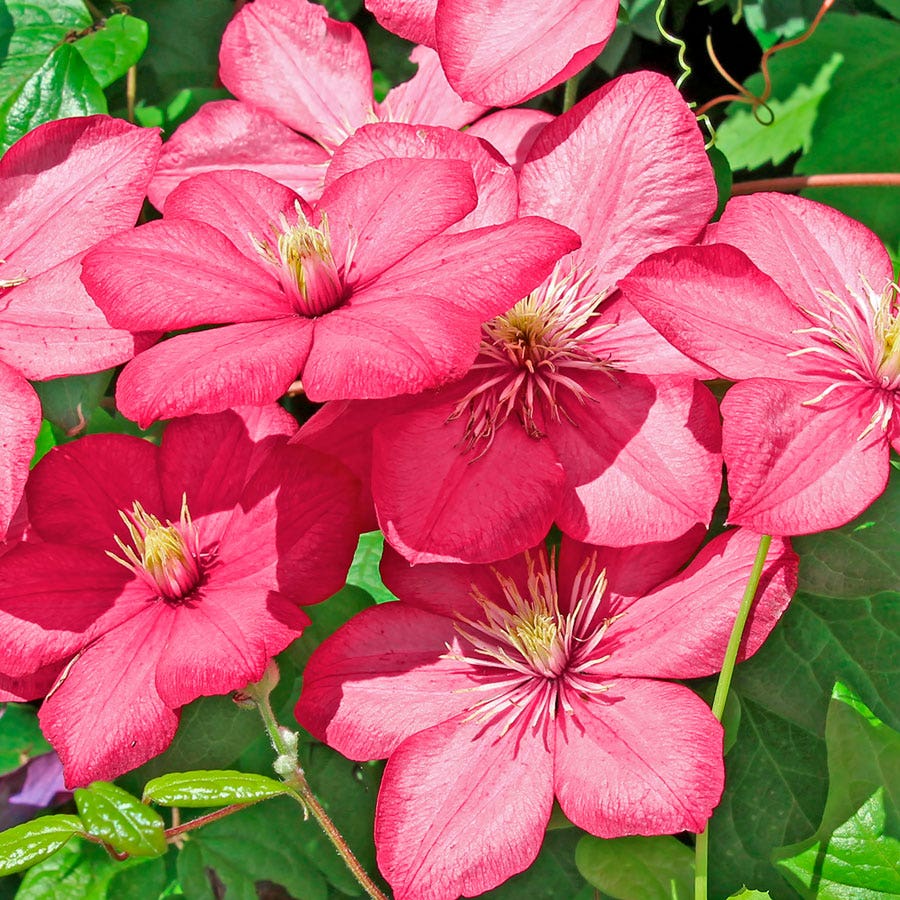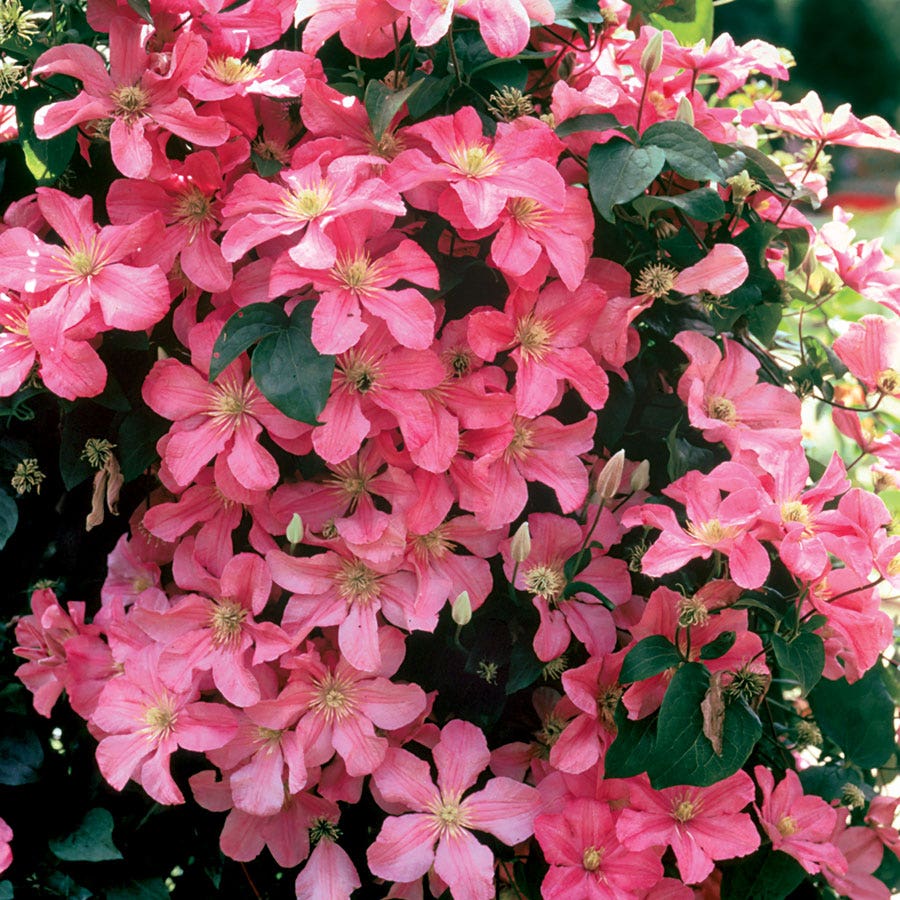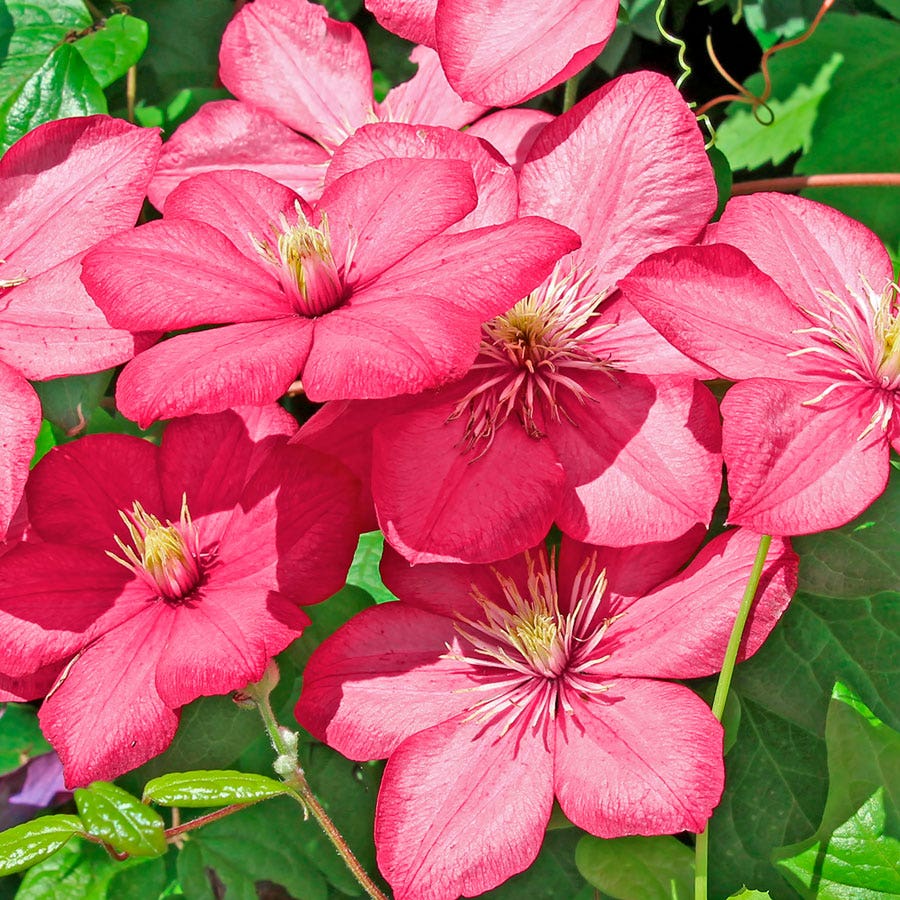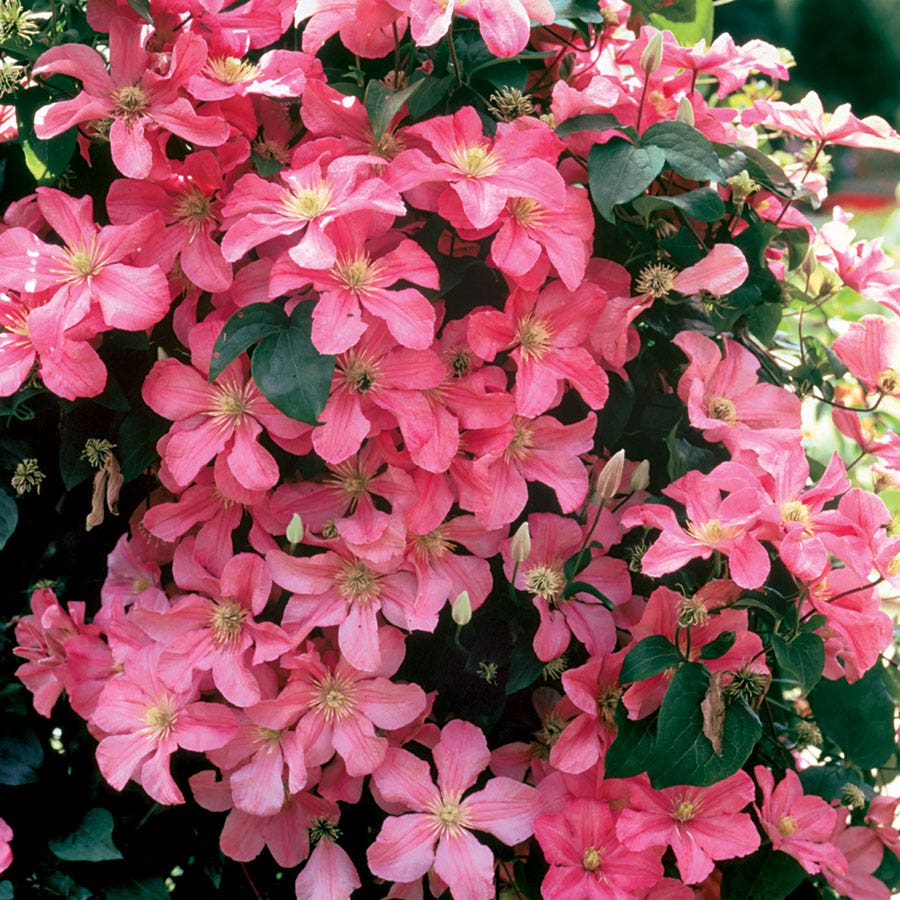parkseed
Clematis 'Comtesse de Bouchard'
Clematis 'Comtesse de Bouchard'
Zone compatibility details
Understanding the Prices on Our Product Pages
When shopping on our site, you might notice different types of prices listed for products. Here’s a quick guide to help you understand what each price means:
- Regular Price: The price before any discounts, typically reflecting the median price from the past 90 to 180 days, excluding special promotions and clearance events.
- Now Price: The updated price of an item after a reduction from the regular price. Now Prices are often limited to a short time frame and offer the opportunity to save.
- MSRP: Manufacturer's Suggested Retail Price, provided by the manufacturer as a benchmark to highlight the value of our current pricing.
- Discount Exempt: Products labeled discount exempt are not eligible for discounts or promotional offers.
Please note that product prices are subject to change without notice.
Couldn't load pickup availability
Share
Your ZIP code ✎
Zone compatibility details
This variety’s zone range
—
My hardiness zone
—
The USDA hardiness zones offer a guide to varieties that will grow well in certain climates. Each zone corresponds to the minimum winter temperatures experienced in a given area. Make sure that your hardiness zone lies within the zone compatibility range of this variety before ordering.
Spring Shipping Schedule
Spring Shipping Schedule and Zone Opening Earliest Ship Dates
Note: At Park Seed, we are committed to shipping healthy live plants at the ideal planting time for your zone. In order to ensure our plants are shipped at the optimal conditions, we regularly adjust our shipping timeframes as needed. The below table reflects our current estimate of timing for rose, live plant and bulb shipping this season.
| Zone | Bareroot Roses | Container Roses | Plants & Bulbs | Sweet Potato & Avocado | Citrus | Blooming Blocks |
|---|---|---|---|---|---|---|
| 1-3 | Early-Mid May | Mid May | Mid May | Late May-Mid June | Early-Mid May | Early-Mid May |
| 4-5 | Early-Mid Apr | Late Apr-Early May | Late Apr-Early May | Mid-Late May | Late Apr-Early May | Early-Mid May |
| 6 | Mid-Late Mar | Mid-Late Apr | Mid-Late Apr | Early-Mid May | Early-Mid Apr | Early-Mid May |
| 7 | Early-Mid Mar | Mid-Late Apr | Late Mar-Early Apr | Late Apr-Mid May | Early-Mid Apr | Early-Mid May |
| 8 | Mid-Late Feb | Mid-Late Apr | Late Mar-Early Apr | Mid-Late Apr | Early-Mid Apr | Early-Mid May |
| 9-13* | Late Jan-Mid Feb | Mid-Late Apr | Late Mar-Early Apr | Mid-Late Apr | Early-Mid Apr | Early-Mid May |



Grow Zone
4 - 9
Mature Height in Inches
120"
Mature Width in Inches
need max width meta
Sun / Shade
Full SunPart Shade
Bloom Size
" - "
Tomato Fruit Set
Days to Maturity
Fruit Weight
Soil Tolerance
Clay and Normal, loamy
Moisture
Moist, well-drained
Description / Clematis 'Comtesse de Bouchard'
Royal Horticultural Society Award of Garden Merit
Clematis 'Comtesse de Bouchard' is a showy, perennial, large-flowered clematis offering early to late summer interest. A gardeners' favorite since the early 1900s, the extremely floriferous plant sets masses of large, shell pink flowers with a touch of lavender and contrasting creamy yellow stamens in the center. The single, 6-petaled flowers have wavy-edged, recurved petals that give the blooms a rounded shape. The plant blooms on new wood, and at maturity, the vine is fully covered in flowers that attract bees, butterflies, and hummingbirds.
A fast-growing, deciduous climbing vine, Clematis 'Comtesse de Bouchard' has a compact, twining, and trailing growth habit of bright green leaves that stay fresh and attractive all season. There is an old saying about clematis' growth rate: The first year they sleep, the second year they creep, and the third year they leap. Train clematis to climb a trellis, arbor, post, or fence, adding vertical interest. Or allow it to amble along the ground, meandering gracefully through the shrubbery. But for something really special, pair it with a climbing rose, allowing the nimble clematis to twine its way around the sturdy rose stalks. The two will elegantly mingle blooms in the early season, but the clematis will carry it through the heat of summer and the rose will pick up again in fall as the clematis' blooms fade.
Cold Hardy, easy to grow, and less prone to clematis wilt than other large-flowered varieties, Clematis 'Comtesse de Bouchard' prefers full sun to part shade and fertile, moist, well-drained alkaline soil. But it tolerates a wide variety of soils, including chalk, clay, and loams that are acid or alkaline. Good site selection is key. So, remember the adage for success with clematis when planting: feet in the shade, head in the sun. The plant should be placed where the leaves get plenty of sunshine (approx. 6 hours), but the roots are shaded and kept cool, either by low-growing, evergreen shrubs or by heavy mulch. Good drainage is important, and extremely wet locations should be avoided. Protect the vine from strong winds but allow good air circulation. Deer resistant.
A Group 3 late-flowering clematis (blooms on new wood in the summer and fall; dies to the ground over winter), Clematis 'Comtesse de Bouchard' should be pruned hard before new growth appears in late winter to remove dead or weak, spindly stems and to make way for the new growth. Cut back to 2 feet or just above pairs of healthy, swelling leaf buds. If training to climb, loosely tie the vines to their structure at this time. It can be pruned again after the first flush of flowers in early summer, cutting back to large buds, to promote a second flush of flowers, but deadheading is unnecessary. This group has to re-grow to their mature size each summer, so they tend to be the last to flower.
Uses: Arbors, Pergolas, Trellises, Wall Sides, Fences, Borders, Beds, and Containers
Product Details
Virtual SKU: v2515
Selected Product SKU: 29133
Genus: Clematis
Species: hybrid
Variety: 'Comtesse de Bouchard'
Bloom Color: Pink
Foliage Color: Medium Green
Habit: Vining
Light Requirements: Full SunPart Shade
Moisture Requirements:- Moist, well-drained
Bloom End: Late Summer
Uses:- Beds
- Border
- Containers
- Vines and Climbers
- Award Winner
- Flower
- Free Bloomer
- Native
- Trellises

